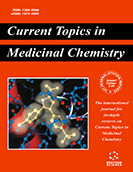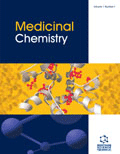Abstract
Members of the Really Interesting New Gene (RING) family of proteins are found throughout the cells of eukaryotes and function in processes as diverse as development, oncogenesis, viral replication and apoptosis. There are over 200 members of the RING family where membership is based on the presence of a consensus sequence of zinc binding residues. Outside of these residues there is little sequence homology; however, there are conserved structural features. Current evidence strongly suggests that RINGs are protein interaction domains. We examine the features of RING binding motifs in terms of individual cases and the potential for finding a universal consensus sequence for RING binding domains (FRODOs). This review examines known and potential functions of RINGs, and attempts to develop a framework within which their seemingly multivalent cellular roles can be consistently understood in their structural and biochemical context. Interestingly, some RINGs can selfassociate as well as bind other RINGs. The ability to self-associate is typically translated into the annoying propensity of these domains to aggregate during biochemical characterization. The RINGs of PML, BRCA1, RAG1, KAP1/TIF1β, Polycomb proteins, TRAFs and the viral protein Z have been well characterized in terms of both biochemical studies and functional data and so will serve as focal points for discussion. We suggest physiological functions for the oligomeric properties of these domains, such as their role in formation of macromolecular assemblages which function in an intricate interplay of coupled metal binding, folding and aggregation, and participate in diverse functions: epigenetic regulation of gene expression, RNA transport, cell cycle control, ubiquitination, signal transduction and organelle assembly.
Current Protein & Peptide Science
Title: Construction of Macromolecular Assemblages in Eukaryotic Processes and their Role in Human Disease: Linking RINGs Together
Volume: 1 Issue: 1
Author(s): A. Kentsis and K. L. B. Borden
Affiliation:
Abstract: Members of the Really Interesting New Gene (RING) family of proteins are found throughout the cells of eukaryotes and function in processes as diverse as development, oncogenesis, viral replication and apoptosis. There are over 200 members of the RING family where membership is based on the presence of a consensus sequence of zinc binding residues. Outside of these residues there is little sequence homology; however, there are conserved structural features. Current evidence strongly suggests that RINGs are protein interaction domains. We examine the features of RING binding motifs in terms of individual cases and the potential for finding a universal consensus sequence for RING binding domains (FRODOs). This review examines known and potential functions of RINGs, and attempts to develop a framework within which their seemingly multivalent cellular roles can be consistently understood in their structural and biochemical context. Interestingly, some RINGs can selfassociate as well as bind other RINGs. The ability to self-associate is typically translated into the annoying propensity of these domains to aggregate during biochemical characterization. The RINGs of PML, BRCA1, RAG1, KAP1/TIF1β, Polycomb proteins, TRAFs and the viral protein Z have been well characterized in terms of both biochemical studies and functional data and so will serve as focal points for discussion. We suggest physiological functions for the oligomeric properties of these domains, such as their role in formation of macromolecular assemblages which function in an intricate interplay of coupled metal binding, folding and aggregation, and participate in diverse functions: epigenetic regulation of gene expression, RNA transport, cell cycle control, ubiquitination, signal transduction and organelle assembly.
Export Options
About this article
Cite this article as:
Kentsis A. and B. Borden L. K., Construction of Macromolecular Assemblages in Eukaryotic Processes and their Role in Human Disease: Linking RINGs Together, Current Protein & Peptide Science 2000; 1 (1) . https://dx.doi.org/10.2174/1389203003381478
| DOI https://dx.doi.org/10.2174/1389203003381478 |
Print ISSN 1389-2037 |
| Publisher Name Bentham Science Publisher |
Online ISSN 1875-5550 |
 15
15
- Author Guidelines
- Bentham Author Support Services (BASS)
- Graphical Abstracts
- Fabricating and Stating False Information
- Research Misconduct
- Post Publication Discussions and Corrections
- Publishing Ethics and Rectitude
- Increase Visibility of Your Article
- Archiving Policies
- Peer Review Workflow
- Order Your Article Before Print
- Promote Your Article
- Manuscript Transfer Facility
- Editorial Policies
- Allegations from Whistleblowers
Related Articles
-
Tamoxifen Resistance and Epigenetic Modifications in Breast Cancer Cell Lines
Current Medicinal Chemistry The Dark Side of Stem Cells: Triggering Cancer Progression by Cell Fusion
Current Molecular Medicine Mucosal T Cell Proliferation and Apoptosis in Inflammatory Bowel Disease
Current Drug Targets Peptide-Receptor Ligands and Multivalent Approach
Anti-Cancer Agents in Medicinal Chemistry Peptide modules for overcoming barriers of nucleic acids transport to cells
Current Topics in Medicinal Chemistry Epigenetics and Periodontal Disease: Hope to Tame the Untameable
Current Gene Therapy Generating ‘Omic Knowledge’: The Role of Informatics in High Content Screening
Combinatorial Chemistry & High Throughput Screening Targeted Drug Delivery in Brain Tumors-nanochemistry Applications and Advances
Current Topics in Medicinal Chemistry Prolyl-Specific Peptidases and Their Inhibitors in Biological Processes
Current Chemical Biology Concomitant CXCR4 and CXCR7 Expression Predicts Poor Prognosis in Renal Cancer
Current Cancer Drug Targets The Biology of the Sodium Iodide Symporter and its Potential for Targeted Gene Delivery
Current Cancer Drug Targets Bioinformatic Approaches in Glycomics and Glycoproteomics
Current Proteomics TGF-β Receptor Signaling Pathways in Angiogenesis; Emerging Targets for Anti-Angiogenesis Therapy
Current Pharmaceutical Biotechnology Cannabinoid Hyperemesis Syndrome
Current Drug Abuse Reviews Perspectives on mTOR Inhibitors for Castration-Refractory Prostate Cancer
Current Cancer Drug Targets Chaperoning the Cancer: The Proteostatic Functions of the Heat Shock Proteins in Cancer
Recent Patents on Anti-Cancer Drug Discovery Pharmacogenomics: A Tool to Prevent and Cure Coronary Heart Disease
Current Pharmaceutical Design Boron Nitride Nanotubes: Production, Properties, Biological Interactions and Potential Applications as Therapeutic Agents in Brain Diseases
Current Nanoscience The Mediterranean Diet and Gastrointestinal Cancers Risk
Recent Patents on Food, Nutrition & Agriculture Inflammatory Bowel Disease – From Bench to Bedside
Current Drug Targets

















.jpeg)








